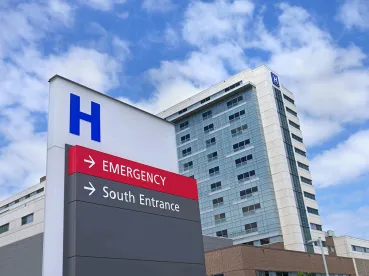The Office of Inspector General (OIG) for the Department of Health and Human Services recently announced a new addition to its work plan: auditing whether payments made by Medicare for COVID-19 inpatient discharges billed by hospitals comply with federal requirements. This initiative stems from Section 3710 of the Coronavirus Aid, Relief, and Economic Security (CARES) Act, which applies a 20 percent increase to the inpatient prospective payment system (IPPS) diagnosis-related group (DRG) rate for COVID-19 patients during the public health emergency period. The government’s inclusion of this increase was meant to help ease the financial burden of hospitals in caring for patients with the novel coronavirus, particularly with many other sources of hospital revenue suspended or curtailed due to the pandemic.
In April 2020, CMS issued guidance on the new COVID-19 policies for IPPS hospitals. CMS has stated that it will identify COVID-19 discharges through the following two ICD-10 diagnosis codes:
- U07.1 (COVID-19) for discharges occurring on or after April 1, 2020
- B97.29 (Other coronavirus as the cause of diseases classified elsewhere) for discharges occurring on or after Jan 27, 2020, and on or before March 31, 2020
However, in an August 2020 update to this guidance, CMS noted the need for hospitals to document a patient’s positive COVID-19 test to address potential Medicare program integrity risks. Thus, effective with admissions occurring on or after September 1, 2020, claims will require a positive COVID-19 laboratory test documented in the patient’s medical record in order to be eligible for the 20 percent increase in the DRG weighting factor provided under the CARES Act. It does not appear that CMS will impose this requirement for claims prior to the September 1 effective date.
Such test results must be based on the use of a viral test (i.e., molecular or antigen), and must be performed within 14 days of the hospital admission. CMS indicated that in rare circumstances a test performed more than 14 days prior to the patient’s hospital admission could be sufficient if other complex medical factors satisfy the documentation requirement. Documentation of a test performed by an entity other than the hospital will also satisfy the requirement—so that, for instance, a hospital can add a positive COVID-19 test result obtained a week before the patient’s hospital admission from a local government-run testing center to the medical record to provide documentation of the COVID-19 diagnosis.
The August CMS guidance noted that CMS may conduct post-payment review to confirm the presence of a positive COVID-19 test, and may recoup the 20 percent increase in the DRG payment if there is no such evidence in the patient’s medical record. The OIG appears to now be executing on this prior indication. Importantly, if hospitals do not have evidence of a positive test result, they can decline the 20 percent increase at the time of claim submission via their MAC in order to avoid repayment later.
OIG’s recent work plan announcement further increases the scrutiny on these payments, as COVID-19-associated hospitalizations continue to drop and approach the mid-March levels. As noted above, CMS has also indicated that it may commence audits. Notably, industry groups, including the American Hospital Association, which represents nearly 5,000 providers, have pushed back against this new requirement. These stakeholders have said that a bigger concern is that many COVID-19 cases go undiagnosed, and that a delay between infection and testing can often yield false negatives. Because health care resources are already stretched thin in treating patients with COVID-19, and in conducting sufficient testing in general, these groups argue, CMS’ imposition of this additional hurdle to receive reimbursement is unfair and a waste of resources.
Further, with no end in sight to the number of coronavirus infections nationwide and with an additional wave of cases widely anticipated as temperatures drop and flu season draws near, hospitals across the country are nonetheless bracing for another surge of COVID-19 admissions. Although the DRG payment bump for COVID-19 patients may help to recoup some of the excess costs associated with caring for such patients, hospitals should continue to be mindful of the documentation requirements associated with this payment increase and the institution of audits by the OIG and CMS. Hospitals should also put in place policies and paperwork processes to identify claims that do not have sufficient documentation to support the 20 percent payment increase, and proactively turn down the extra money via their MAC in such circumstances to avoid treatment as an overpayment.



 />i
/>i

